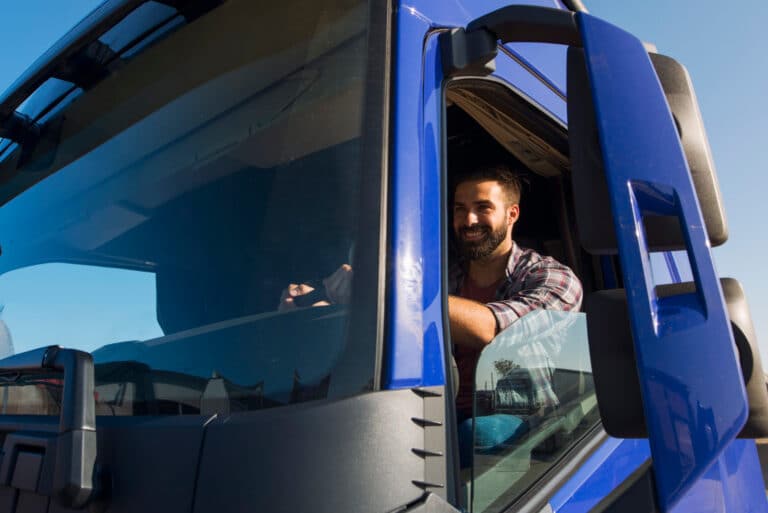Safe loading of vehicles
Over recent years, Health and Safety Executive records suggest that 60 individuals have been killed and 5000 seriously injured whilst working in the haulage sector. The figures are actually a higher rate than those for sectors we think of as being high risk such as construction and agriculture. Major injuries have been caused by falls from vehicles, being hit by moving vehicles, manual handling activities and falling objects. We have seen a number of claims involving items falling on drivers as they open up a vehicle. We have therefore included a few tips to help drivers prevent injuries from falling objects.
- Risk assessments should cover vehicle loading and unloading operations. Always think about the risk of the load shifting and falling on the driver when the back doors or side curtains are opened. Don’t rely on the curtain sides to restrain a load.
- The driver is responsible for the load on their vehicle, whether or not they loaded the vehicle themselves. Drivers should therefore be trained in the principles of load safety and how loads can move during transit. The driver must understand that a load that is not restrained is not secure.
- The restraint system must be capable of handling the full weight of the load as it moves forward and half the weight as it moves sideways or backwards.
- Be aware of the maximum load the vehicle floor or trailer can take.
- The condition of the floor, bodywork and restrain system should always be checked before loading occurs.
- Try and place the load in contact with the headboard when possible. Regularly check the headboard for damage.
- Spread a load to keep the centre of gravity low with the heaviest objects on the floor but ensure that the packaging of lower products can support the weight of the products stacked above.
- Rope hooks should not be used to anchor loads. Lashing points for securing loads should be compliant with the requirements of British Standard BS EN 12640:2006. The load capacity of the anchor points should be specified in the vehicle.
- Equipment such as webbing and ropes used to secure loads must be inspected for wear and tear on a regular basis and the manufacturers instructions for use should be followed. Nylon ropes should not be used as they stretch under a load. Follow the maximum loading information for ropes, webbing, chains etc. and ensure that equipment is compliant with the relevant British Standard e.g. BS EN699: 1995 for ropes. The Rated Assembly Strength marked on a webbing restraint system should never be exceeded.
- Provide a minimum of 4 twist locks for every freight container carried.
- Steel banding is not adequate for securing loads. It cannot be tightened if it works loose on route and the adequacy of strength is difficult to determine.
- When steel banding is used to secure a load to a pallet, the pallet and the load still need to be secured to the vehicle.
- Restrains for the horizontal and vertical movement of the pallets must be provided.
- Check the security of the load at intervals through the journey and also after a few miles into the journey. Weather conditions may require restraints to be retensioned.
- Design the load restraints so as to ensure that the failure of one restraint will not compromise the security of the entire load.
- Lashings giving forward restraint should not be at an angle of more than 60°.
- If sheeting is required, fit the rear sheet first so the overlapped sheeting is not facing forwards.
- Empty pallets should always be restrained.
Whilst drivers have a lot to consider during the loading and unloading process, we mustn’t forget that management teams need to provide systems for inspecting restraint equipment and systems for safe access so that loads can be secured without placing people at risk of falling from height.
There are many other important issues to remember when working with vehicles, but we hope this reminder on load safety will help drivers keep safe.
For more detail call 0333 567 2003











